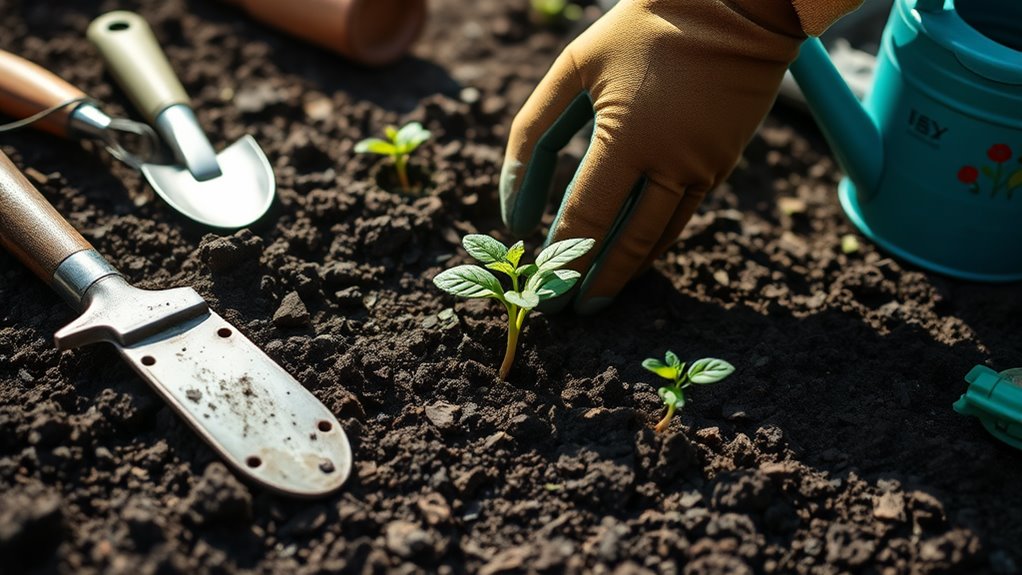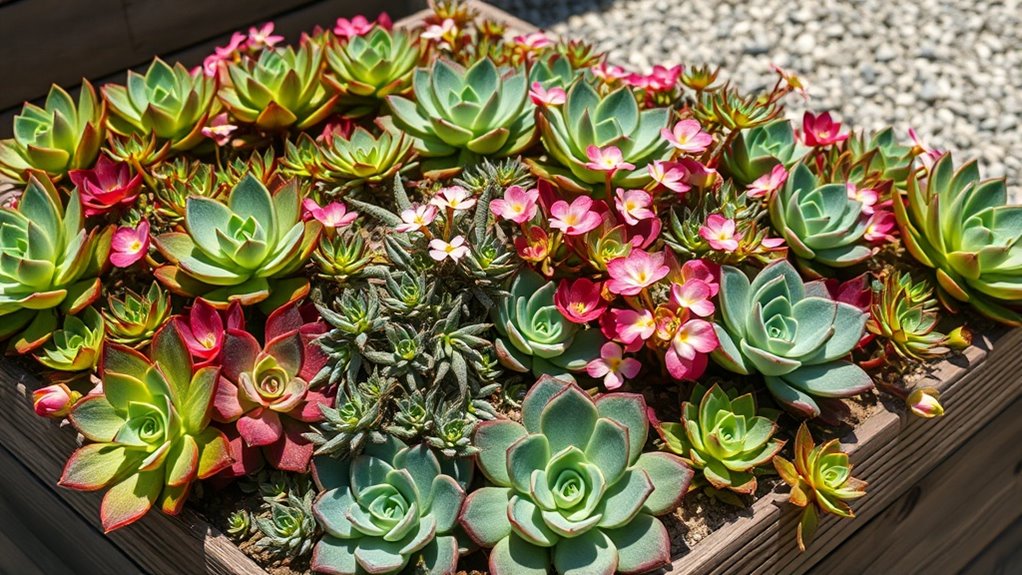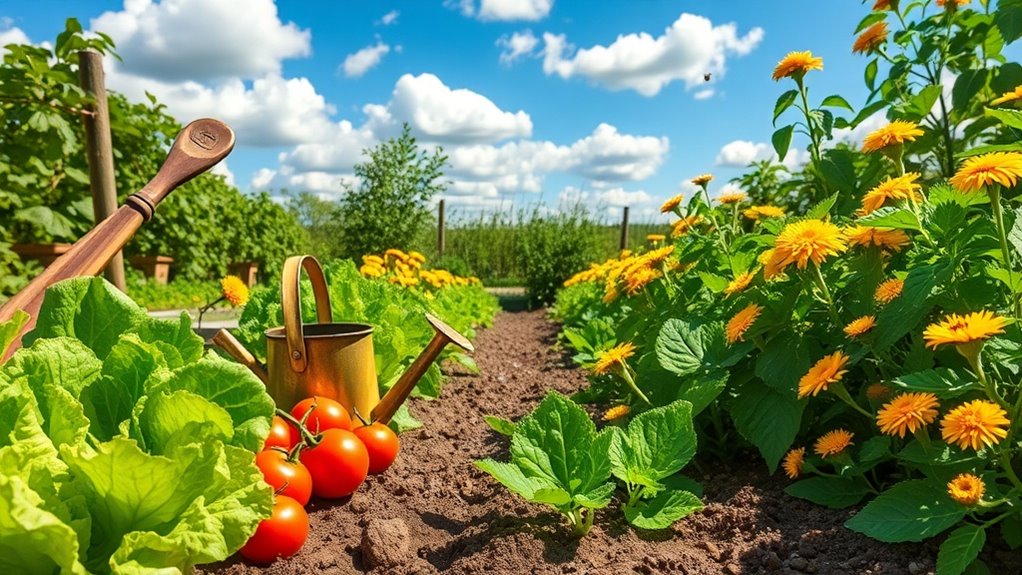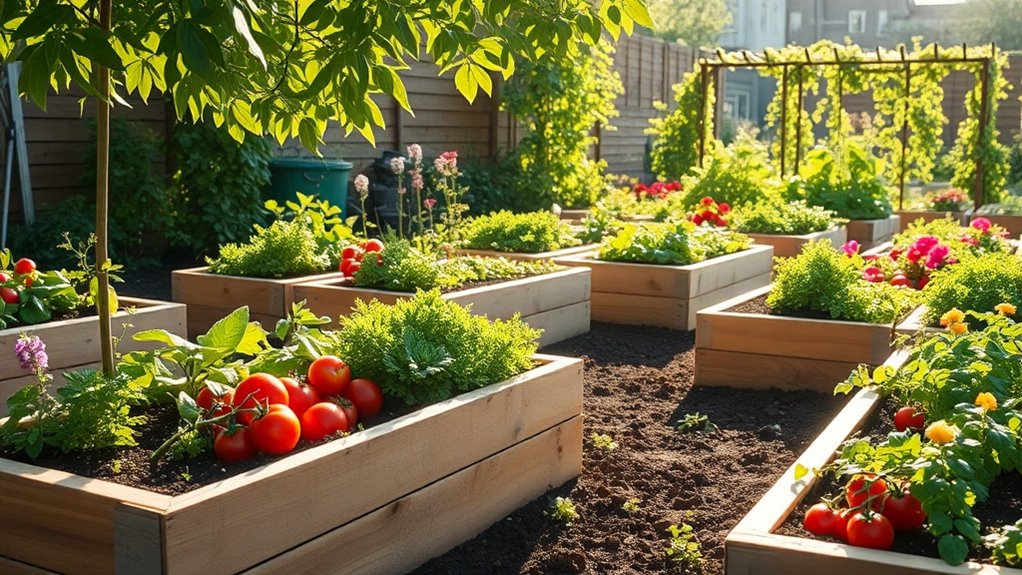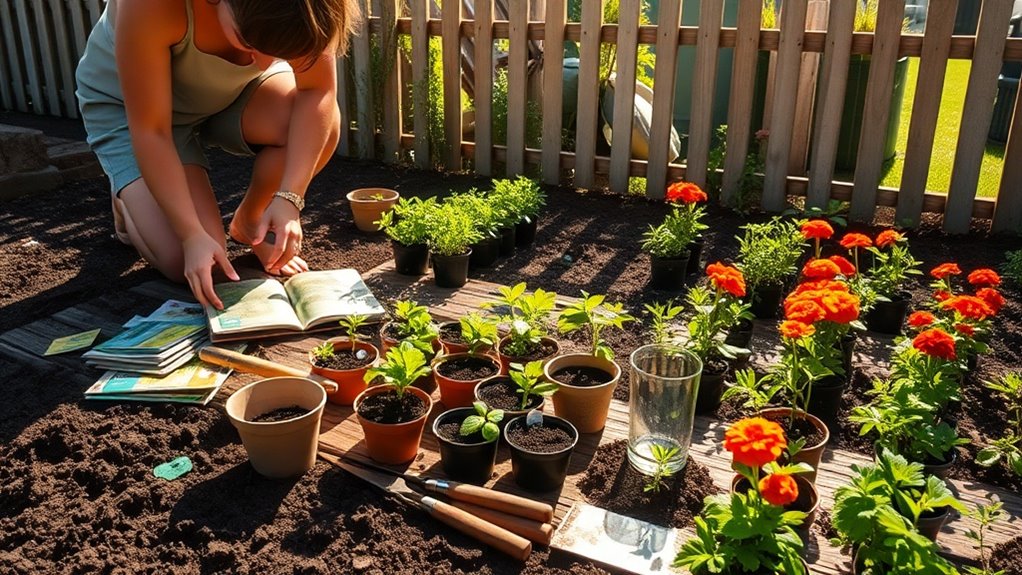How to Start a Garden Without a Clue (Works Every Time!)
You can start a garden even if you’re clueless by first assessing your space—check for at least six hours of sunlight and test soil for good drainage to avoid issues. Choose easy plants like marigolds or basil that match your sunlight, soil, and local hardiness zone, prioritizing natives for low maintenance. Grab essential tools such as a hand trowel, pruning shears, and gloves to make tasks smoother. Plant in well-prepared spots, water deeply right away, and monitor growth regularly for pests or moisture needs. Follow these steps for success, and you’ll uncover more strategies to keep your garden thriving.
Key Takeaways
- Assess your garden space first by checking sunlight, soil type, and water access to ensure ideal conditions.
- Choose easy-to-grow plants like marigolds or basil that match your local climate and sunlight levels.
- Gather basic tools such as a hand trowel, gloves, and a watering can to make gardening simpler.
- Plant in prepared soil by digging proper holes, placing plants correctly, and watering deeply right away.
- Monitor your garden regularly by checking for pests, soil moisture, and growth issues to maintain health.
Assess Your Space
Before you start planting, assess your space to determine if it’s ideal for a garden. As a newbie, you’ll need gardening help to evaluate key factors first.
Check sunlight: most spots require six hours daily for healthy growth. Test soil by digging a sample—aim for loamy, well-draining earth, not clay or sand. Additionally, mastering soil preparation techniques ensures your soil is optimized for plant health across various conditions.
Measure your area accurately to fit beds or containers without overcrowding. Consider water access, wind exposure, and obstacles like trees or structures.
This newbie gardening help ensures your setup is practical and sustainable, avoiding future headaches. To promote healthy plant growth, also focus on watering techniques to prevent common hydration mistakes and ensure your garden thrives.
Choose Your Plants
Once you’ve assessed your space, it’s time to choose plants that thrive in your conditions.
Consider sunlight levels first: select full-sun varieties like tomatoes if your area gets six-plus hours, or shade-tolerant ferns for dim spots.
Match soil type too—opt for drought-resistant succulents in sandy soils or moisture-loving hostas in clay.
Factor in your USDA hardiness zone to ensure plants survive winters; check local frost dates online.
Start with easy growers like marigolds or basil to build confidence, prioritizing natives that support local wildlife and require less maintenance for a sustainable garden. For instance, consider low-effort plants that are ideal for beginners due to their simple care requirements and benefits like resilience.
To maximize your beginner experience, try incorporating uncomplicated methods that simplify the process and lead to rewarding results.
Gather Essential Tools
With your plants selected, you’ll need a few key tools to make gardening efficient and enjoyable.
These basics set you up for success without overwhelming your budget or space. For a more comprehensive setup, consider the top five tools that seasoned gardeners rely on.
Here are four essential tools to gather:
-
Hand trowel: Use this for digging small holes and transplanting; its sturdy blade ensures precise soil work with minimal effort.
-
Pruning shears: Sharpened blades let you trim plants cleanly, promoting healthy growth and preventing disease—opt for ergonomic handles to reduce strain.
-
Gardening gloves: Protect your hands from thorns and dirt while maintaining dexterity; choose breathable, durable materials for all-weather use.
-
Watering can: Its long spout delivers targeted hydration without wasting water, helping you maintain even moisture levels effectively.
To further enhance your gardening experience, consider essential gear that simplifies the planting process and engages beginners.
Plant and Care for Your Garden
Now that your tools are in hand, you’ll dive into planting and caring for your garden by first selecting the ideal spot—one that offers ample sunlight, good drainage, and protection from harsh winds to ensure your plants thrive from the start.
Once the spot is chosen, test and amend the soil for pH and nutrients. Choose a mix of seeds and seedlings suited to your region. Proper soil preparation is essential for a thriving garden.
When planting, dig holes twice the root ball’s size, place plants at the correct depth, and firm soil around them. Water deeply immediately after to establish roots, apply mulch for moisture retention, and stake tall plants for support.
To build on these practices and ensure a successful planting experience, remember to incorporate the essential steps such as assessing soil health, planning your garden layout, and selecting the right plants for your environment.
Monitor and Maintain Growth
After planting your garden, regularly check your plants’ growth to catch issues early; inspect leaves for pests or discoloration, measure progress against expected timelines, and adjust care routines based on what you observe.
This keeps your garden healthy and productive. To maintain optimal growth, follow these steps:
-
Water wisely: Test soil moisture daily; water deeply when the top inch feels dry to encourage strong roots without overwatering. For best results, incorporate watering timing strategies to maximize plant growth while minimizing water usage.
-
Fertilize strategically: Apply balanced fertilizer every 4-6 weeks, observing plant responses to avoid nutrient burn.
-
Prune promptly: Remove dead or diseased parts immediately to prevent spread and promote airflow.
-
Monitor pests weekly: Use natural remedies like neem oil if you spot insects, ensuring eco-friendly control.
In extreme heat, implement heat-proof watering tips to keep your plants hydrated and thriving during scorching conditions.

